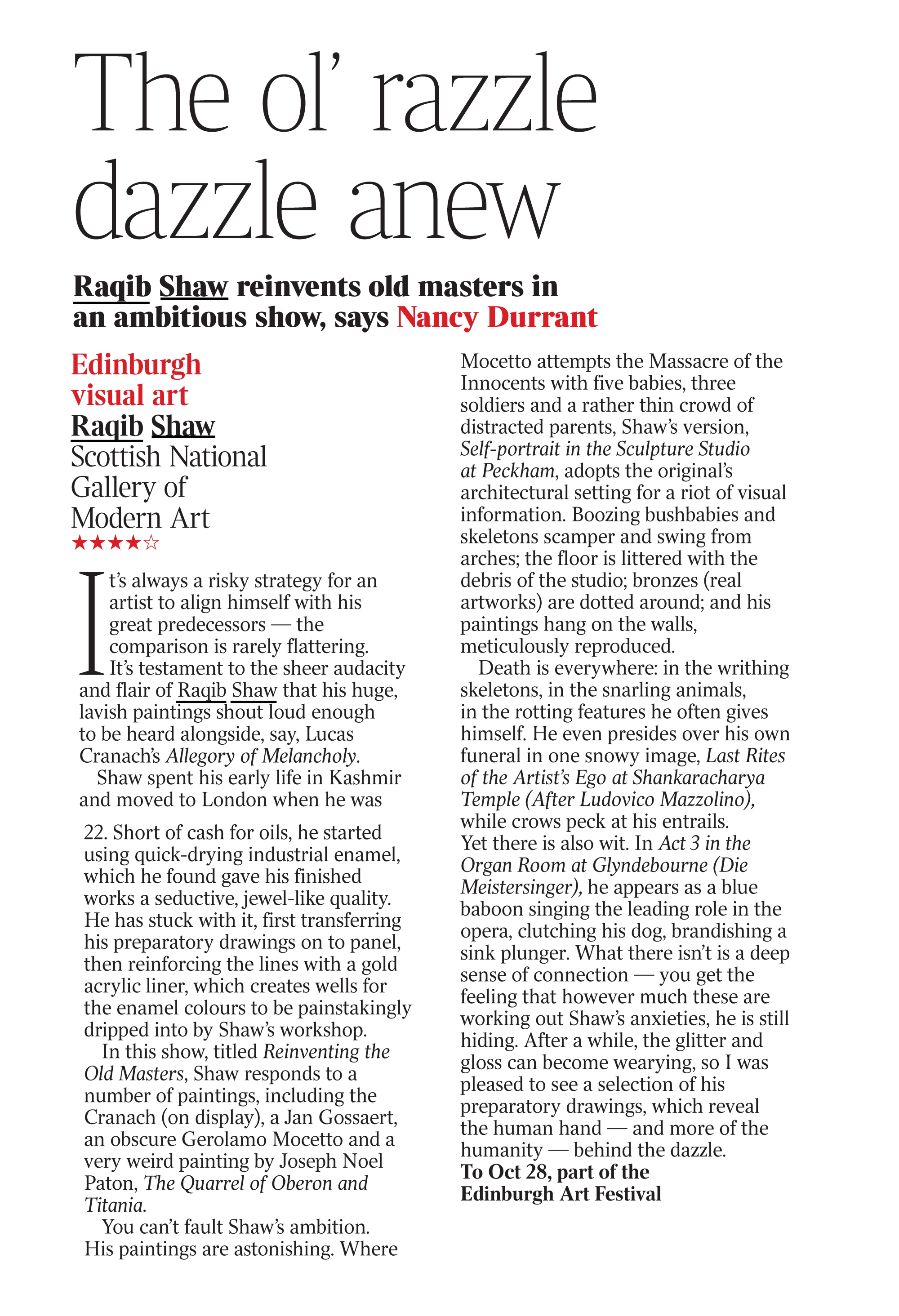
The Ol' Razzle Dazzle Anew

Edinburgh visual art review: Raqib Shaw: Reinventing the Old Masters, at the Scottish National Gallery of Modern Art
Shaw hides in plain sight as he works out his anxieties (and pictures his dogs) in enamel on panel
★★★★☆
It’s always a risky strategy for an artist to align himself with his great predecessors — the comparison is rarely flattering. It’s testament to the sheer audacity and flair of Raqib Shaw that his huge, lavish paintings can shout loud enough to be heard alongside, say, Lucas Cranach’s Allegory of Melancholy.
His work tends to the autobiographical (he appears as a central figure in every painting here, as do his small dogs), and often evokes the now conflict-riven country of his youth with a romantic eye as a lost paradise. In this show, part of the Edinburgh Art Festival, Shaw responds to a number of old master paintings, including the Cranach (on display), a Jan Gossaert, an obscure Gerolamo Mocetto and a very weird painting by Joseph Noel Paton, The Quarrel of Oberon and Titania.
You can’t fault Shaw’s ambition. His paintings are astonishing. Where Mocetto attempts the Massacre of the Innocents with five babies, three soldiers and a rather thin crowd of distracted parents, Shaw’s version, Self-portrait in the Sculpture Studio at Peckham, adopts the original’s architectural setting for a riot of visual information. Boozing bushbabies and skeletons scamper and swing from arches; the floor is littered with the debris of the studio; bronzes (real artworks) are dotted around; and his paintings hang on the walls, meticulously reproduced.
Death is everywhere: in the writhing skeletons, in the snarling animals, in the rotting features he often gives himself. He even presides over his own funeral in one snowy image, Last Rites of the Artist’s Ego at Shankaracharya Temple (After Ludovico Mazzolino), while crows peck at his entrails. Yet there is also wit. In Act 3 in the Organ Room at Glyndebourne (Die Meistersinger), he appears as a blue baboon singing the leading role in the opera, wearing turban and kimono, clutching his dog and brandishing a sink plunger. What there isn’t is a deep sense of connection — you get the feeling that however much these are working out Shaw’s anxieties, he is still hiding.
Shaw spent his early life in Kashmir and moved to London when he was 22. Short of cash for oils, he started using quick-drying industrial enamel, which he found gave his finished works a seductive, jewel-like quality. He has stuck with it, first transferring his many preparatory drawings on to panel, then reinforcing the lines with a gold acrylic liner, which creates small wells for the enamel colours to be painstakingly drippedinto by Shaw’s workshop, rather like cloisonné.
After a while, the glitter and gloss can become wearying, so I was pleased to see on the way out a selection of his preparatory drawings, which reveal the human hand — and a little more of the humanity — behind the dazzle.
To October 28, part of the Edinburgh Art Festival